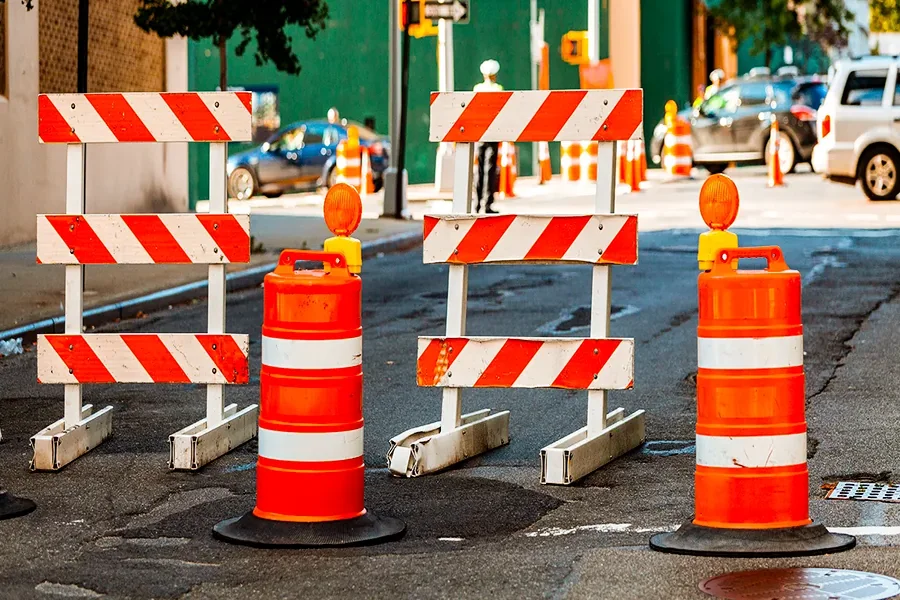
Road barriers are unsung heroes of road safety. Every time you drive on a highway, pass by a construction site, or approach a sharp turn, these barriers are there to protect you and others on the road. But how much do you really know about them?
This guide will walk you through the essentials of road barriers, their types, construction, and emerging trends, helping you understand their critical role in ensuring safe travels.
What Are Road Barriers?
Road barriers, also known as safety barriers, are structures designed to manage traffic flow and prevent accidents. Whether they’re used to divide lanes, protect construction zones, or stop vehicles from veering off the road, their primary function is safety.
The Main Purposes of Road Barriers
- Prevent Accidents: Barriers can reduce the impact of collisions and guide vehicles safely.
- Control Traffic Flow: They help direct vehicles, ensuring smoother traffic and fewer chances of congestion.
- Protect Pedestrians and Workers: For construction sites and pedestrian crossings, barriers act as essential safety shields.
Without road barriers, both drivers and pedestrians would face increased risks on busy roads and highways.
Types of Road Barriers
Road barriers vary in design and use. Let’s explore the most common types, along with their strengths and limitations:
- Concrete Barriers
Description: Permanent structures, often used as lane dividers on highways or to secure construction zones.
Pros:
- High durability and resistance to impact.
- Virtually maintenance-free.
Cons:
- Expensive to install and difficult to relocate.
- Can cause significant damage to vehicles upon collision.
Common Use Cases:
- Highways, bridges, and heavy-traffic urban areas.
- Metal Barriers
Description: Often made of steel, these barriers are flexible and designed to bend slightly upon impact, absorbing energy.
Pros:
- Effective at minimizing damage during collisions.
- Relatively easy to install and replace.
Cons:
- Less durable than concrete over time.
- Susceptible to corrosion.
Common Use Cases:
- Highways and roads with moderate traffic.
- Water-Filled Barriers
Description: Lightweight plastic barriers that can be filled with water for added stability.
Pros:
- Portable and easy to install.
- Impact absorption reduces collision severity.
Cons:
- Vulnerable to extreme weather conditions.
- Not suitable for high-speed areas.
Common Use Cases:
- Temporary construction zones, event crowd control.
- Cable Barriers
Description: Consist of steel cables stretched between posts.
Pros:
- Effective at reducing collision impact for vehicles.
- Flexible and cost-efficient.
Cons:
- Not effective against heavy vehicles.
- Requires regular maintenance to tighten cables.
Common Use Cases:
- Roadside medians and curves.
- Plastic or Polyethylene Barriers
Description: Lightweight plastic barriers, often used for temporary or low-impact scenarios.
Pros:
- Lightweight and portable.
- Cost-efficient for temporary needs.
Cons:
- Minimal resistance to impact.
- Short lifespan.
Common Use Cases:
- Events, short-term road closures.
Materials and Construction
Understanding the materials and how road barriers are built provides insight into their strength and functionality.
Common Materials Used
- Concrete: Known for its long-lasting durability and strength.
- Steel: Used in metal and cable barriers for flexibility and impact absorption.
- Plastic/Polyethylene: Lightweight and cost-effective, but less resilient.
- Rubber: Occasionally used in low-impact areas for temporary traffic control.
Construction Process
Each type of barrier undergoes a specific construction process. For instance:
- Concrete barriers are poured and molded, often reinforced with steel.
- Metal barriers are prefabricated and bolted in place.
- Water-filled barriers are shipped empty and filled upon installation.
Proper construction ensures these barriers meet safety standards and effectively protect drivers and pedestrians.
Usage and Placement Guidelines
Where and when a barrier is used directly impacts its effectiveness. Here are some key guidelines:
Placement Considerations
- Highways and Bridges: Concrete and metal barriers are ideal due to their ability to handle high-speed impacts.
- Construction Zones: Temporary barriers like water-filled or plastic ones are commonly used to protect workers and equipment.
- Sharp Turns and Steep Drop-Offs: Cable barriers work well in these situations by stopping vehicles from leaving the road.
Adhering to Safety Standards
Regulations often dictate barrier placement to ensure public safety. For example:
- Barriers on highways must meet crash-test standards set by organizations like the Federal Highway Administration (FHWA) or similar authorities in other countries.
- Reflective strips and warning signage are often required for nighttime visibility.
Maintenance and Inspection
Road barriers require regular upkeep to remain effective. Here’s how they’re maintained:
Maintenance Tips
- Rust Prevention: Metal barriers should be coated or treated to avoid corrosion.
- Cleaning: Plastic and concrete barriers are cleaned to ensure reflectivity and visibility.
- Structural Repairs: Damaged barriers must be replaced or repaired promptly.
Inspection Process
- Check for cracks or breaks, particularly in concrete barriers.
- Look for rust or loosened cables in metal and cable barriers.
- Verify water-filled barriers are properly weighted and haven’t sprung leaks.
Routine inspections keep barriers in optimal condition, preventing unexpected failures.
Future Trends
The world of road barriers is evolving, with new technologies and materials offering exciting possibilities:
- Smart Barriers
These incorporate sensors to provide real-time data about vehicle impacts or weather conditions, enhancing safety measures.
- Recycled Materials
Sustainable options like barriers made from recycled rubber or plastics are gaining traction, offering an eco-friendly alternative.
- Dynamic Barriers
Movable barriers can adjust lane configurations in real-time, helping manage traffic flow during peak hours.
Innovation in this space signals a future where road barriers don’t just protect but also adapt and enhance road safety dynamically.
Why Road Barriers Are Indispensable
Road barriers are not just functional objects; they’re the guardians of safety for individuals and communities alike. From preventing severe accidents to managing traffic flow, they play a vital role in every stretch of road they occupy.
If you’re interested in learning more about road safety features or need professional guidance, feel free to explore our resources or reach out to our team of experts.
